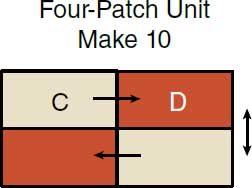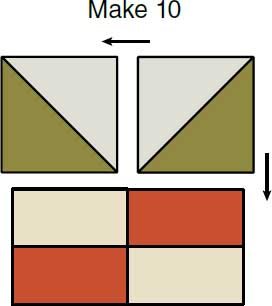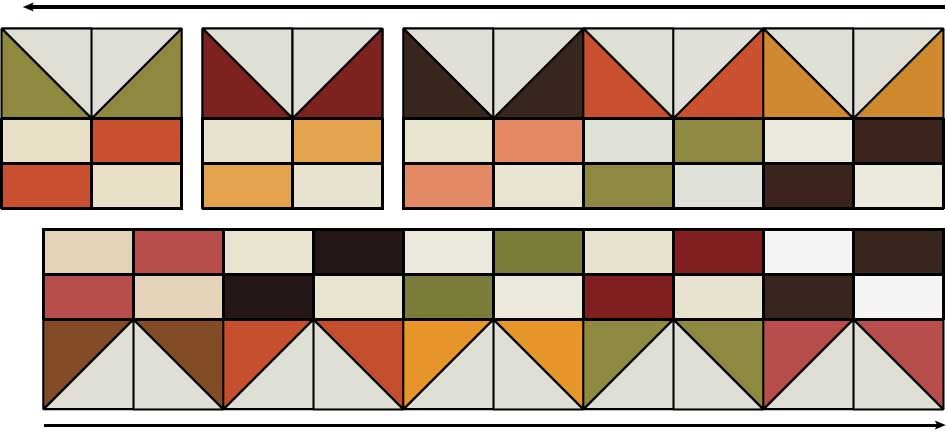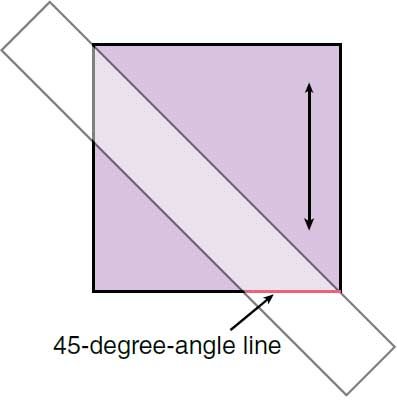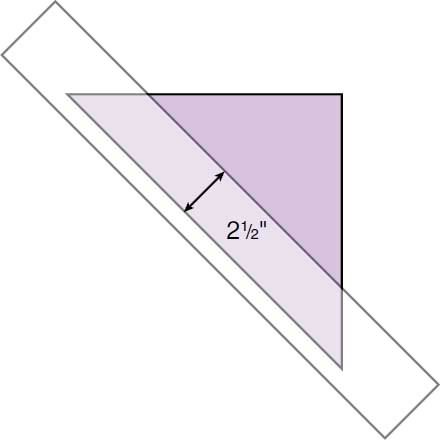Table of Contents
Guide
Pages
If you are an Annies customer and have a question about the instructions on a pattern you have purchased, please visit: AnniesCatalog.com/pages/customer_care/pattern_services.html To download templates for easy printing, view the download instructions at the end of this book or click the Templates chapter in the Table of Contents.
In every quilters home, theres a stash of fabrics. These could be snippets leftover from other projects, lovely pieces bought just because or fabrics gifted by other quilty friends. This colorful assortment is beautiful as is, but there comes a time when you just want to use up that stash. Luckily, the quilting world offers an abundance of beautiful designs that use up these bits and bobs, odd pieces and beautiful fabrics you just had to have. Weve put together a wonderful collection of such patterns that not only will take a bite out of your stash, but also can be sewn up in a short amount of timewhether you have just an afternoon or a whole weekend.
Youll find quilts that make use of small pieces and others that use larger swatches; wall hangings from mix-and-match triangles; and even a pretty throw sewn together with several strips. All in all, these are perfect designs for when you find yourself with a little extra time on your hands and a whole bunch of surplus fabric in your sewing room! Happy quilting!
Table of Contents
General InformationDESIGN BY PALMER BIXLER
QUILTED BY KAREN SOMERS OF SPOOLIN AROUND
Using 30 precut 5 squares and a bit of background fabric, this versatile design is a quick stitch.
SKILL LEVEL Beginner FINISHED SIZES Table Runner Size: 40 16 Block Size: 8 8 Number of Blocks: 10
Square Flair 8 8 Finished Block Make 10 PROJECT NOTES Read all instructions before beginning this project. Stitch right sides together using a seam allowance unless otherwise specified. Materials and cutting lists assume 40 of usable fabric width. Arrows indicate directions to press seams.
WOF width of fabric HST half-square triangle  QST quarter-square triangle
QST quarter-square triangle  MATERIALS yard cream solid 20 precut medium print 5 B squares 10 precut light print 5 B squares yard green stripe 1 yards backing 44 20 batting Thread Basic sewing tools and supplies Fabrics from the Adel in Autumn collection by Sandy Gervais for Riley Blake Designs; Warm 100 cotton batting from The Warm Company; 100% cotton thread from Aurifil used to make sample.Binding yardage and cutting have been calculated to create a bias-cut diagonal stripe binding. If you prefer straight-cut binding, you will need just yard of fabric and will cut 4 (2 WOF) strips for it. Heres a Tip The four-patch unit of the Square Flair block does not necessarily need to have a light-dark pattern. Feel free to mix up your rectangles for a different look. As long as you have 20 precut squares for the four-patches and 10 precut squares to make HSTs, youre good to go! CUTTING From cream solid cut: 10 (5) A squares From each of 10 of the medium print 5 squares cut: 2 (2 4) D rectangles From each light print 5 square cut: 2 (2 4) C rectangles From green stripe cut: 1 (20) square for bias binding COMPLETING THE BLOCKS Refer to Half-Square Triangles and use the cream solid A squares and 10 precut medium print 5 B squares to make 20 A-B HST units (). Trim HST units to 4 square, keeping the diagonal seam centered, if necessary.
MATERIALS yard cream solid 20 precut medium print 5 B squares 10 precut light print 5 B squares yard green stripe 1 yards backing 44 20 batting Thread Basic sewing tools and supplies Fabrics from the Adel in Autumn collection by Sandy Gervais for Riley Blake Designs; Warm 100 cotton batting from The Warm Company; 100% cotton thread from Aurifil used to make sample.Binding yardage and cutting have been calculated to create a bias-cut diagonal stripe binding. If you prefer straight-cut binding, you will need just yard of fabric and will cut 4 (2 WOF) strips for it. Heres a Tip The four-patch unit of the Square Flair block does not necessarily need to have a light-dark pattern. Feel free to mix up your rectangles for a different look. As long as you have 20 precut squares for the four-patches and 10 precut squares to make HSTs, youre good to go! CUTTING From cream solid cut: 10 (5) A squares From each of 10 of the medium print 5 squares cut: 2 (2 4) D rectangles From each light print 5 square cut: 2 (2 4) C rectangles From green stripe cut: 1 (20) square for bias binding COMPLETING THE BLOCKS Refer to Half-Square Triangles and use the cream solid A squares and 10 precut medium print 5 B squares to make 20 A-B HST units (). Trim HST units to 4 square, keeping the diagonal seam centered, if necessary.
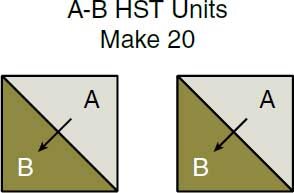
Using two matching C rectangles and two matching D rectangles, sew two rows of two rectangles each ().
Sew the rows together to make a four-patch unit. Make 10..
Figure 2 Arrange two matching HST units and one four-patch unit (). Sew the HSTs together, and then sew the HSTs to the four-patch unit to complete a Square Flair block. Make 10.
Figure 3 Heres a Tip
While laying out the table runner, try rotating blocks for a different look. COMPLETING THE TABLE RUNNER Referring to the Assembly Diagram, lay out the blocks in two rows of five each, noting the orientation of the blocks.
Sew the blocks into rows and join the rows to complete the table runner top. Press. Layer and quilt as desired referring to Quilting Basics. The photographed runner was quilted with an edge-to-edge flower design. Refer to Cutting Bias Strips and use the green stripe square to make at least 122 of 2-wide bias-cut binding. QW
Square Flair Assembly Diagram 40 16 CUTTING BIAS STRIPS Bias strips are cut at a 45-degree angle to the crosswise or lengthwise grain of the fabric.
QWSquare Flair Assembly Diagram 40 16 CUTTING BIAS STRIPS Bias strips are cut at a 45-degree angle to the crosswise or lengthwise grain of the fabric.
Strips cut on the bias will have stretch, which allows them to be used for appliqu and other applications where curving the strip is required, such as wrapping cord or binding rounded corners and projects. However, bias strips require careful handling to be sure the strips are not stretched out of shape or distorted. Since bias strips are being cut from a square on the straight of grain, it is essential to know the length of continuous bias strips that can be cut from the square. To determine this length, first find the area of the square by multiplying the squares measurement by itself, then divide by the desired width of the strip. For example, to find the total length of 2-wide bias that can be cut from a 12 square, multiply 12 12, which equals 144 and then divide 144 by 2 to equal 57. This formula has been used to fill in the chart at right for use as an easy reference.
Based on your project, determine the length and width of bias desired. Cut the size square needed along the straight grain referring to your chart. Place the 45-degree line on your ruler along the bottom edge of the square and cut diagonally across the square from corner to corner ().
Figure A Being careful not to stretch the edge, place the ruler along the cut edge at the width desired and cut a strip ().

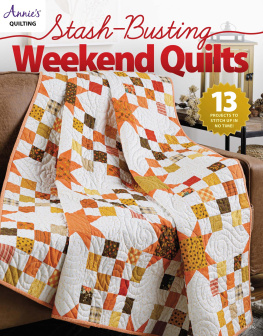
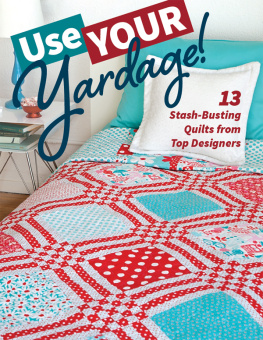
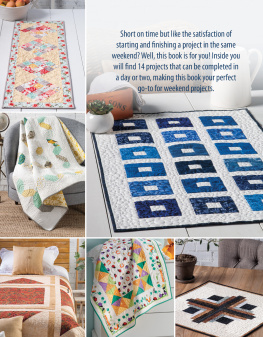

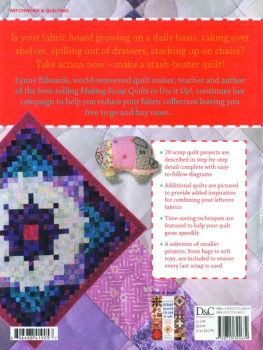
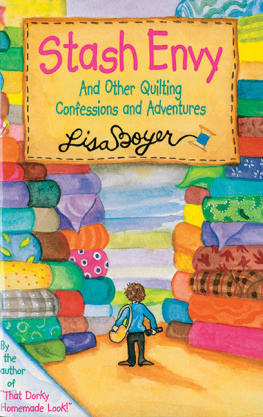
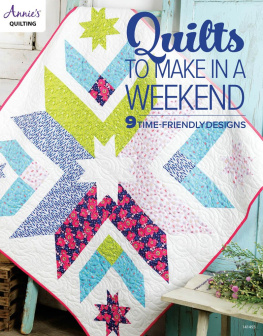
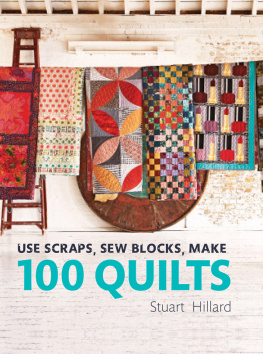
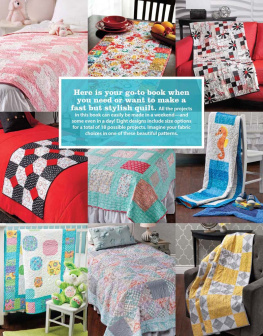
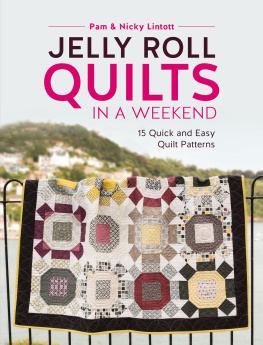




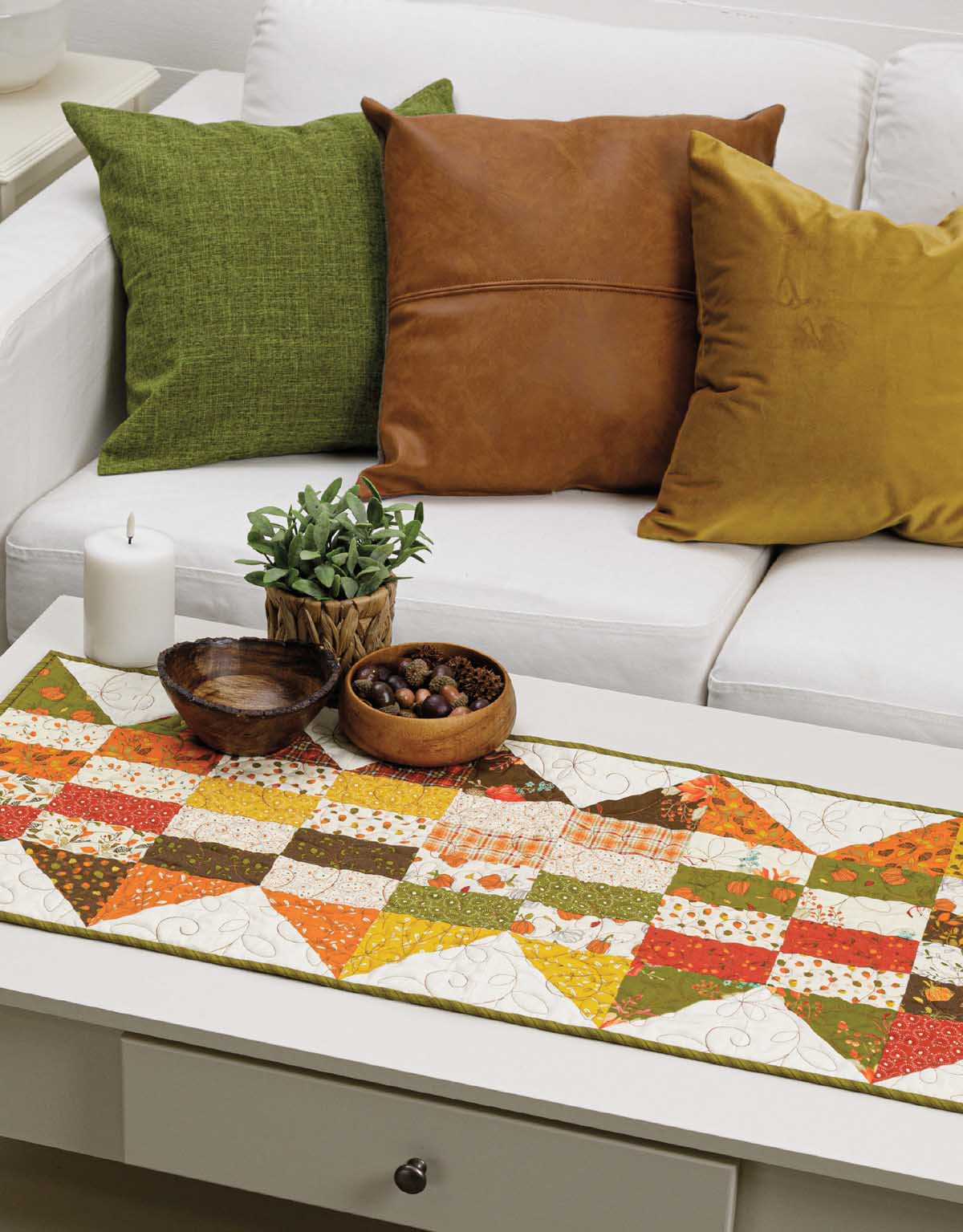
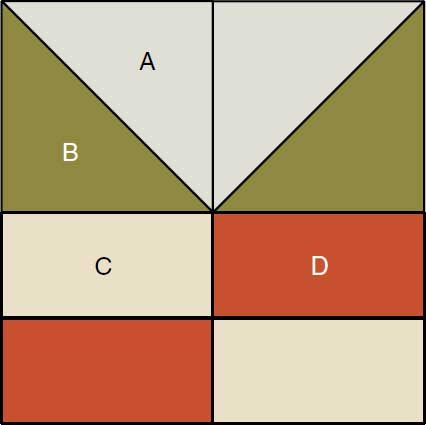
 QST quarter-square triangle
QST quarter-square triangle  MATERIALS yard cream solid 20 precut medium print 5 B squares 10 precut light print 5 B squares yard green stripe 1 yards backing 44 20 batting Thread Basic sewing tools and supplies Fabrics from the Adel in Autumn collection by Sandy Gervais for Riley Blake Designs; Warm 100 cotton batting from The Warm Company; 100% cotton thread from Aurifil used to make sample.Binding yardage and cutting have been calculated to create a bias-cut diagonal stripe binding. If you prefer straight-cut binding, you will need just yard of fabric and will cut 4 (2 WOF) strips for it. Heres a Tip The four-patch unit of the Square Flair block does not necessarily need to have a light-dark pattern. Feel free to mix up your rectangles for a different look. As long as you have 20 precut squares for the four-patches and 10 precut squares to make HSTs, youre good to go! CUTTING From cream solid cut: 10 (5) A squares From each of 10 of the medium print 5 squares cut: 2 (2 4) D rectangles From each light print 5 square cut: 2 (2 4) C rectangles From green stripe cut: 1 (20) square for bias binding COMPLETING THE BLOCKS Refer to Half-Square Triangles and use the cream solid A squares and 10 precut medium print 5 B squares to make 20 A-B HST units (). Trim HST units to 4 square, keeping the diagonal seam centered, if necessary.
MATERIALS yard cream solid 20 precut medium print 5 B squares 10 precut light print 5 B squares yard green stripe 1 yards backing 44 20 batting Thread Basic sewing tools and supplies Fabrics from the Adel in Autumn collection by Sandy Gervais for Riley Blake Designs; Warm 100 cotton batting from The Warm Company; 100% cotton thread from Aurifil used to make sample.Binding yardage and cutting have been calculated to create a bias-cut diagonal stripe binding. If you prefer straight-cut binding, you will need just yard of fabric and will cut 4 (2 WOF) strips for it. Heres a Tip The four-patch unit of the Square Flair block does not necessarily need to have a light-dark pattern. Feel free to mix up your rectangles for a different look. As long as you have 20 precut squares for the four-patches and 10 precut squares to make HSTs, youre good to go! CUTTING From cream solid cut: 10 (5) A squares From each of 10 of the medium print 5 squares cut: 2 (2 4) D rectangles From each light print 5 square cut: 2 (2 4) C rectangles From green stripe cut: 1 (20) square for bias binding COMPLETING THE BLOCKS Refer to Half-Square Triangles and use the cream solid A squares and 10 precut medium print 5 B squares to make 20 A-B HST units (). Trim HST units to 4 square, keeping the diagonal seam centered, if necessary.
